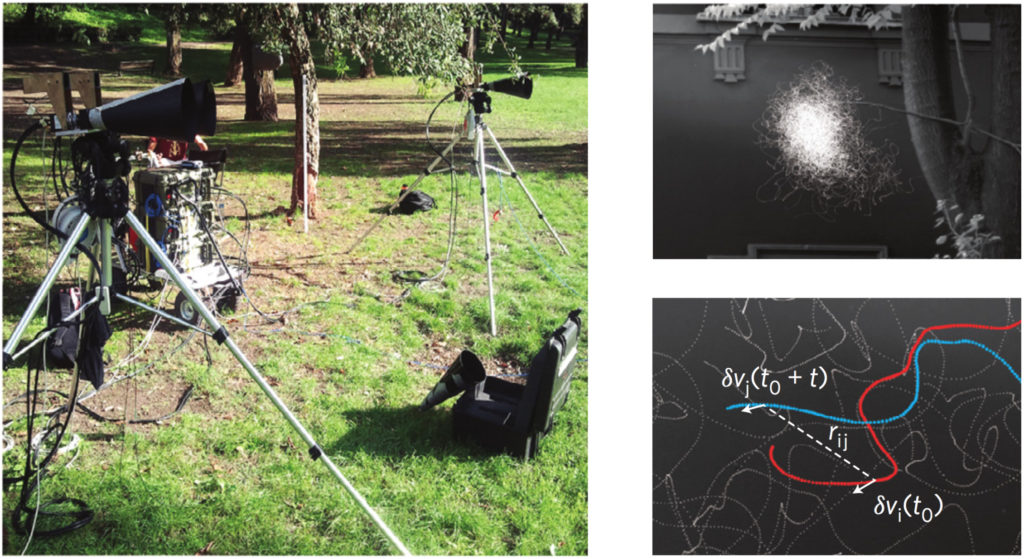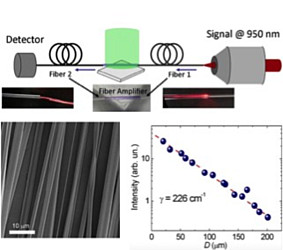The study of emerging phenomena in systems with many interacting components is the focus of this strategic area that includes numerous fields, with both fundamental and application aspects: network theory, Big Data, epidemiology, neuroscience, engineered materials, collective motion in physics and biology. This area covers also the study of laboratory-created and natural plasmas with an intrinsically multidisciplinary approach requiring skills in physics, chemistry and engineering. Their applications are in fields such as energy and thermonuclear fusion, materials and microelectronics, nanostructured surfaces, astrophysics and physics of space, space technologies, biology and biomedicine, environment and waste treatment, cultural heritage, development of coherent radiation sources, compact charged particle accelerators.
Goals are:
- Emergent behavior and complexity in classical physics (critical phenomena, disordered systems, spin glasses) and quantum physics (coherent light, superconductivity, superfluidity), both from the theoretical and experimental perspective.
- Big Data and network theory technologies for the control, prevention and prediction of viral techno-social phenomen, cascade phenomena (technological breakdowns, economic and financial crises) and for the protection of both infrastructures (electrical, transport, logistics networks), and natural ecosystems in unstable equilibrium with anthropogenic structures.
- Fundamental studies on non-linear waves and chaotic dynamics. Applications of machine learning to non-linear and statistical physics.
- Neural networks and synchronization processes. Applications to the analysis and decoding of electrophysiological signals and to the simulation of multi-scale neural systems from the microscopic level to the entire connectome (Human Brain Project).
- Theory, simulation and experimental studies of natural and laboratory plasmas for applications in magnetic fusion, laser-plasma interaction, space and astrophysical plasmas, aerospace, plasma-materials interaction.
- Coordination of the CNR expertise on Controlled Thermo-nuclear Fusion with magnetic confinement in the frame of the participation in the European R&D program on Fusion (EURATOM, EUROfusion), for the realization of ITER (Fusion for Energy, ITER Intern. Org.) and DTT, the new Italian facility for nuclear fusion.
Spotlights on research activity
Dynamic scaling in natural swarms
 Collective behavior in biological systems presents theoretical challenges beyond the borders of classical statistical physics. The lack of concepts such as scaling and renormalization is particularly problematic, as it forces us to negotiate details whose relevance is often hard to assess. In an attempt to improve this situation, we have presented experimental evidence of the emergence of dynamic scaling laws in natural swarms of midges. We found that spatio–temporal correlation functions in different swarms can be rescaled by using a single characteristic time, which grows with the correlation length with a dynamical critical exponent z ≈ 1, a value not found in any other standard statistical model. To check whether out–of–equilibrium effects may be responsible for this anomalous exponent, we run simulations of the simplest model of self–propelled particles and find z ≈ 2, suggesting that natural swarms belong to a novel dynamic universality class. This conclusion is strengthened by experimental evidence of the presence of non–dissipative modes in the relaxation, indicating that previously overlooked inertial effects are needed to describe swarm dynamics. The absence of a purely dissipative regime suggests that natural swarms undergo a near–critical censorship of hydrodynamics.
Collective behavior in biological systems presents theoretical challenges beyond the borders of classical statistical physics. The lack of concepts such as scaling and renormalization is particularly problematic, as it forces us to negotiate details whose relevance is often hard to assess. In an attempt to improve this situation, we have presented experimental evidence of the emergence of dynamic scaling laws in natural swarms of midges. We found that spatio–temporal correlation functions in different swarms can be rescaled by using a single characteristic time, which grows with the correlation length with a dynamical critical exponent z ≈ 1, a value not found in any other standard statistical model. To check whether out–of–equilibrium effects may be responsible for this anomalous exponent, we run simulations of the simplest model of self–propelled particles and find z ≈ 2, suggesting that natural swarms belong to a novel dynamic universality class. This conclusion is strengthened by experimental evidence of the presence of non–dissipative modes in the relaxation, indicating that previously overlooked inertial effects are needed to describe swarm dynamics. The absence of a purely dissipative regime suggests that natural swarms undergo a near–critical censorship of hydrodynamics.
Contact person: Andrea Cavagna, ISC Rome
Complex active optical networks as a new laser concept

We have investigated complex optical networks containing one or more gain sections, and we have reported the evidence of lasing action; the emission spectrum reflects the topological disorder induced by the connections. A theoretical description compares well with the measurements, mapping the networks to directed graphs and showing the analogies with the problem of quantum chaos on graphs. We have shown that the interplay of chaotic diffusion and amplification leads to an emission statistic with characteristic heavy tails: for different topologies, we have provided an unprecedented experimental demonstration of Lévy statistics, expected for random lasers, for a continuous–wave pumped system.
Contact person: Stefano Lepri, ISC-CNR Sesto Fiorentino
Local equilibrium in bird flocks

We have introduced a novel dynamical inference technique, based on the principle of maximum entropy, which accommodates network rearrangements and overcomes the problem of slow experimental sampling rates. We have used this method to infer the strength and range of alignment forces from data of starling flocks. We have found that local bird alignment occurs on a much faster timescale than neighbour rearrangement. Accordingly, equilibrium inference, which assumes a fixed interaction network, gives results consistent with dynamical inference. We conclude that bird orientations are in a state of local quasi–equilibrium over the interaction length scale, providing firm ground for the applicability of statistical physics in certain active systems.
Contact person: Massimiliano Viale, ISC–CNR Univ. Roma La Sapienza
Electrospun amplified fiber optics

We have reported on near–infrared polymer fiber amplifiers working over a band of about 20 nm. The fibers are cheap, spun with a process entirely carried out at room temperature, and shown to have amplified spontaneous emission with good gain coefficients and low levels of optical losses (a few cm–1). The amplification process is favored by high fiber quality and low self–absorption. The found performance metrics appear to be suitable for short–distance operations, and the large variety of commercially available doping dyes might allow for effective multi–wavelength operations by electrospun amplified fiber optics.
Contact person: Dario Pisignano, NANO–CNR Pisa
